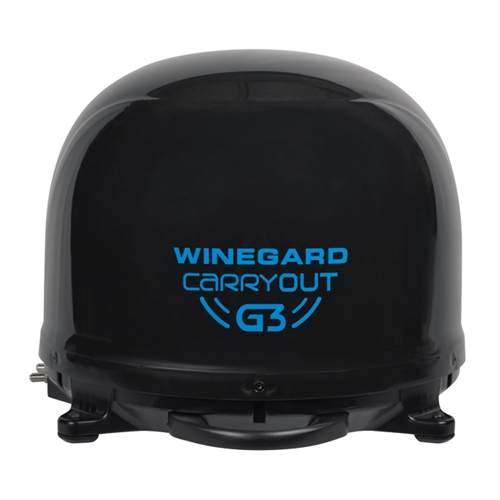 Despite being on the road and enjoying the outdoors, there are times when it’s just as nice to stay inside and watch some TV. When it comes to RVing, there are several options, including online streaming or cable. However, internet connection may not always be reliable. On the other hand, many campgrounds and parks don’t have cable hookups. If you are looking for more traditional TV viewing, there are still several options of RV antennas available so you don’t miss the big game, or your favorite shows.
Despite being on the road and enjoying the outdoors, there are times when it’s just as nice to stay inside and watch some TV. When it comes to RVing, there are several options, including online streaming or cable. However, internet connection may not always be reliable. On the other hand, many campgrounds and parks don’t have cable hookups. If you are looking for more traditional TV viewing, there are still several options of RV antennas available so you don’t miss the big game, or your favorite shows.
Over The Air TV RV Antennas
If all you need are local channels or are looking for a more budget friendly option, an over-the-air RV antenna may be your best bet. You won’t need a cable or internet hookup! Whatever local stations are available are free to watch without needing to pay for subscriptions. Two examples of this type of antenna include the Winegard Sensar and Winegard Air 360. The Sensar receives VHF/UHF channels and can be raised or lowered depending on whether the RV is parked. The Air 360 features 360 degree signal reception and can pick up signals from up to 55 miles away. It also has the ability to pick up local FM radio stations.
HDTV RV Antennas
One step up from a standard over the air RV antenna is an HD antenna. Also known as High Definition, HD signals present a higher resolution, and therefore a better image quality than standard definition. Like a standard antenna, it will be able to provide free over the air TV watching of local channels. The Winegard Rayzar automatic HD antenna has automatic aiming, so you don’t have to scan for channels manually. It takes about 2 minutes to scan 16 quadrants, ensuring the highest amount of possible channels. It searches for VHF and UHF signals up to 50 miles away.
Satellite RV Antennas
The last type is satellite RV antennas, which come in several different versions. It can give you a greater range of channels than an over the air antenna, and many can work with existing satellite subscriptions. There are both fixed rooftop mounted versions, as well as portable versions that sit on a tripod stand and can be placed outside just about anywhere. Since a drawback to satellites is being able to get a clear signal, a portable version can more easily work around potential obstructions. However the differences don’t end there. There is even further distinction with manual or automatic RV satellite antennas. A manual antenna requires you to position the angle of the antenna to find the best reception, while an automatic version will position itself when scanning for channels. This can be ideal if you move around often. The Winegard Carryout is a portable satellite antenna that works with DISH, DirecTV, and Bell TV. It automatically locates signals and features a UV protected dome.
When choosing between RV TV antenna options, there are several things to keep in mind. Factors such as budget, how often you travel, and whether you travel remotely can all affect what you decide to go with. For example, an over the air antenna is the least expensive option, but is more limited in its channel selection. On the other hand, if you don’t plan on watching much TV when you go RVing, an over the air antenna may be all you need.